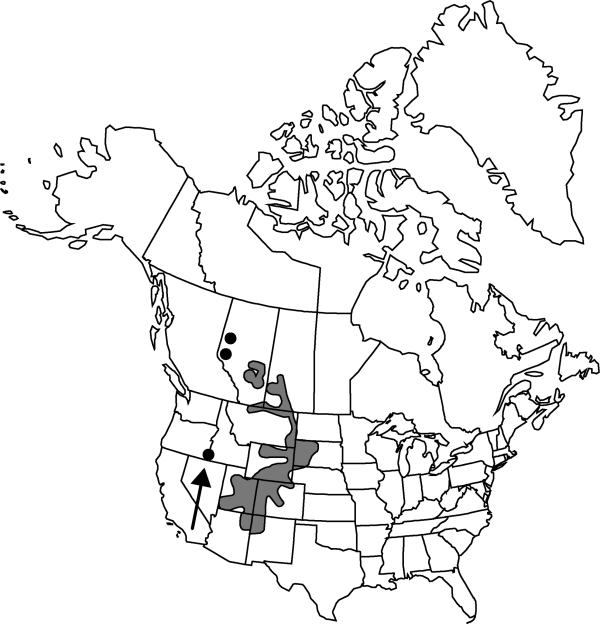Atriplex powellii
Proc. Amer. Acad. Arts 9: 114. 1874.
Herbs, dioecious or sometimes sparingly monoecious. Stems slender to stout, mainly 1–5(–7) dm, branching almost throughout; herbage pubescent with scurfy and arachnoid hairs. Leaves alternate, proximalmost on petioles (3–)5–30 mm, becoming subsessile or short petiolate distally; blade 3-veined, ovate to rhombic or orbiculate to elliptic, 0.4–5 × 0.2–3 cm, base rounded to cuneate, margin entire, apex acute to obtuse. Staminate flowers with calyx 4–5-lobed. Fruiting bracteoles sessile, ovate to oblong or broadly cuneate or pan-duriform, 1.5–5.5 × 1.5–5 mm, thick, united to apex, apex truncate to cuspidate or tridentate, surfaces with thickened processes or rarely smooth. Seeds greenish, yellowish, or brown, 0.9–2 mm; radicle superior. 2n = 18.
Distribution

w North America.
Discussion
Varieties 2 (2 in the flora).
Selected References
None.
Key
| 1 | Leaves mostly conspicuously 3-veined, proximalmost with petioles 0.5-2.5(-3.5) cm, distalmost bracteate leaves typically short petiolate; fruiting bracteoles easily discerned at bract bases; plants mostly dioecious; from Alberta and Saskatchewan s to Utah and New Mexico | Atriplex powellii var. powellii |
| 1 | Leaves inconspicuously, if at all, 3-veined, proximalmost with petioles 0.5-1.5(-2) cm, distalmost bracteate leaves typically sessile; fruiting bracteoles apparent only by removing the subtending bract; plants evidently monoecious; local distribution in se Utah. | Atriplex powellii var. minuticarpa |